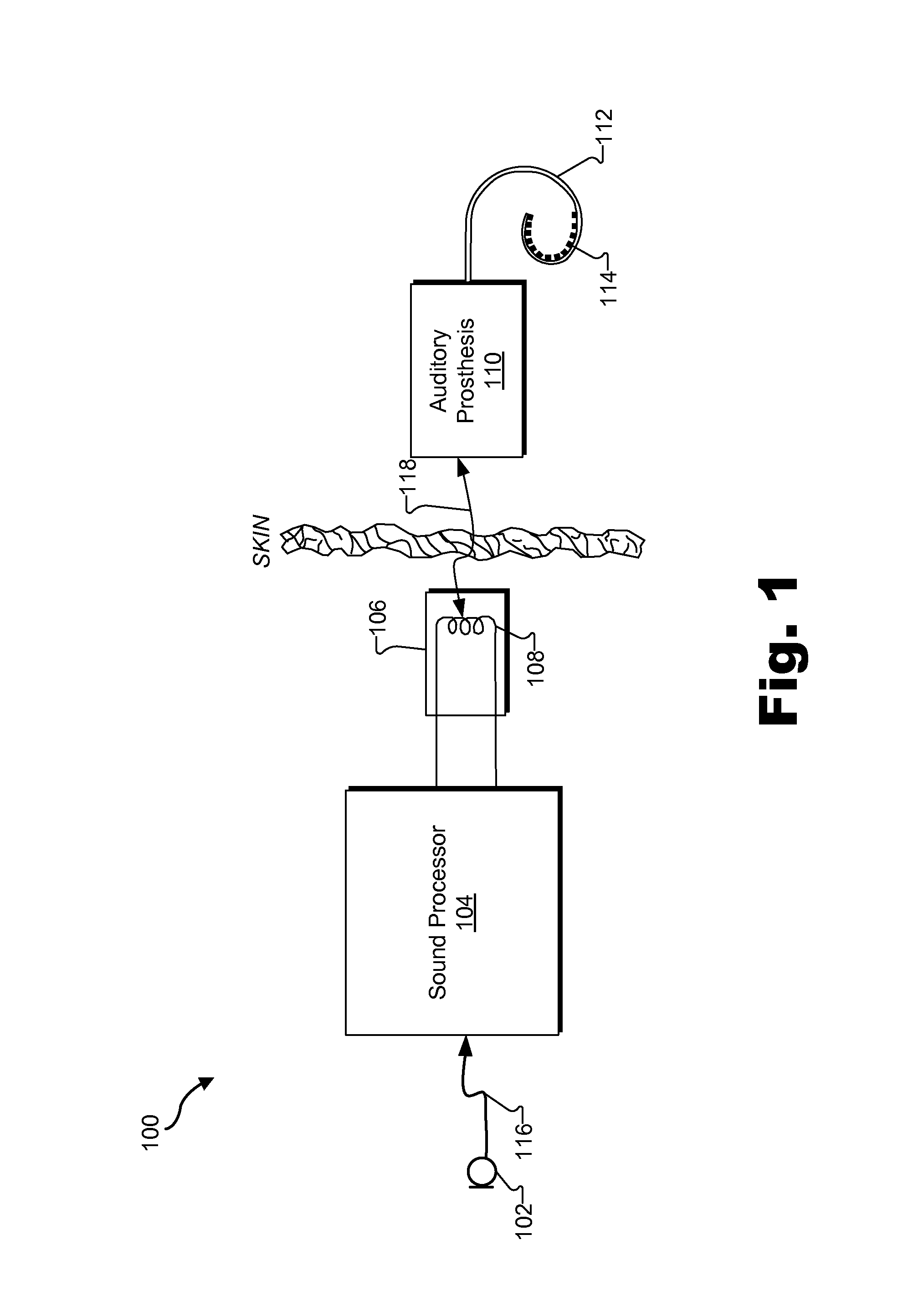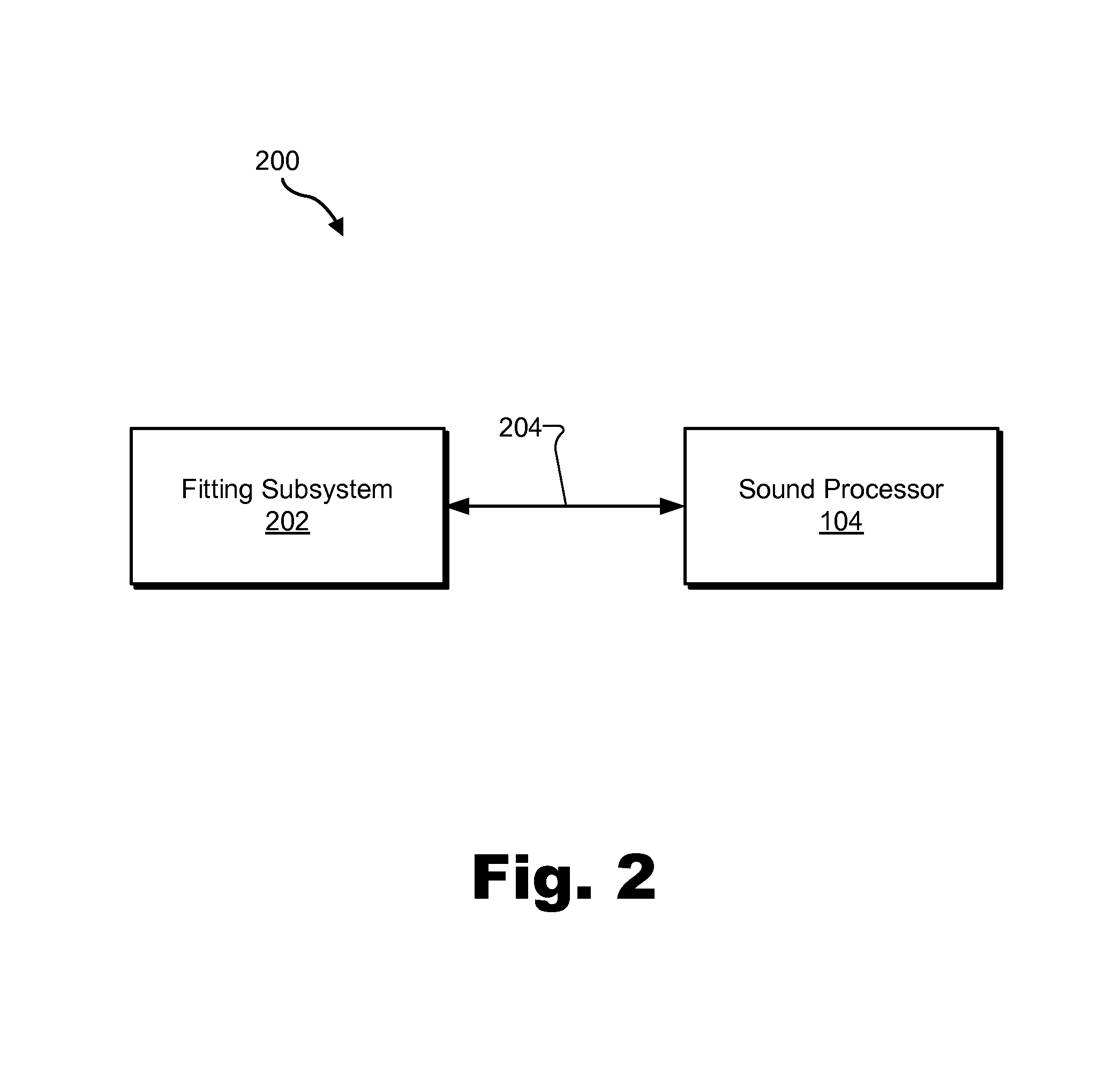Systems and methods for facilitating time-based fitting by a sound processor
a sound processor and time-based technology, applied in the field of time-based fitting systems and methods, can solve the problems of conductive hearing loss, impeded sound pathways, and impeded normal mechanical pathways to reach the hair cells in the cochlea
- Summary
- Abstract
- Description
- Claims
- Application Information
AI Technical Summary
Benefits of technology
Problems solved by technology
Method used
Image
Examples
Embodiment Construction
[0018]Systems and methods for facilitating time-based fitting by a sound processor included in an auditory prosthesis system are described herein. As will be described in more detail below, the systems and methods described herein may obviate the need for an auditory prosthesis patient to visit a clinic so that various fitting operations associated with his or her auditory prosthesis system may be performed. This may make the fitting process associated with an auditory prosthesis system easier, less costly, more reliable, and more convenient for both the patient and the clinician.
[0019]To illustrate, during an initial fitting session at a clinic, a sound processor may be programmed to subsequently (e.g., after the patient has left the clinic) perform one or more fitting operations after a predetermined time period has elapsed. For example, a sound processor may be programmed to automatically switch from operating in accordance with a particular sound processing program to operating ...
PUM
 Login to View More
Login to View More Abstract
Description
Claims
Application Information
 Login to View More
Login to View More - R&D
- Intellectual Property
- Life Sciences
- Materials
- Tech Scout
- Unparalleled Data Quality
- Higher Quality Content
- 60% Fewer Hallucinations
Browse by: Latest US Patents, China's latest patents, Technical Efficacy Thesaurus, Application Domain, Technology Topic, Popular Technical Reports.
© 2025 PatSnap. All rights reserved.Legal|Privacy policy|Modern Slavery Act Transparency Statement|Sitemap|About US| Contact US: help@patsnap.com



